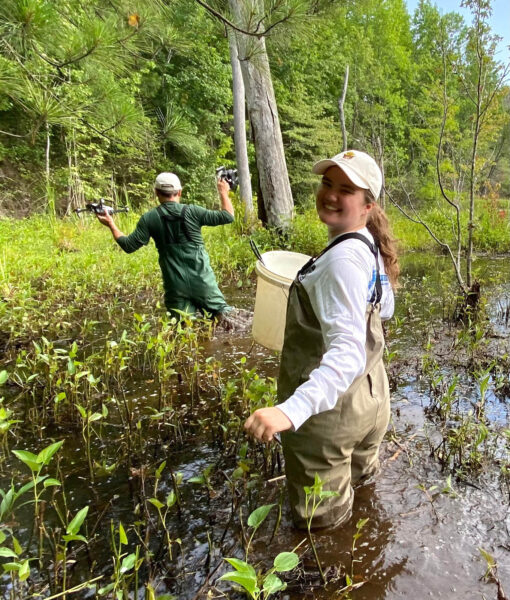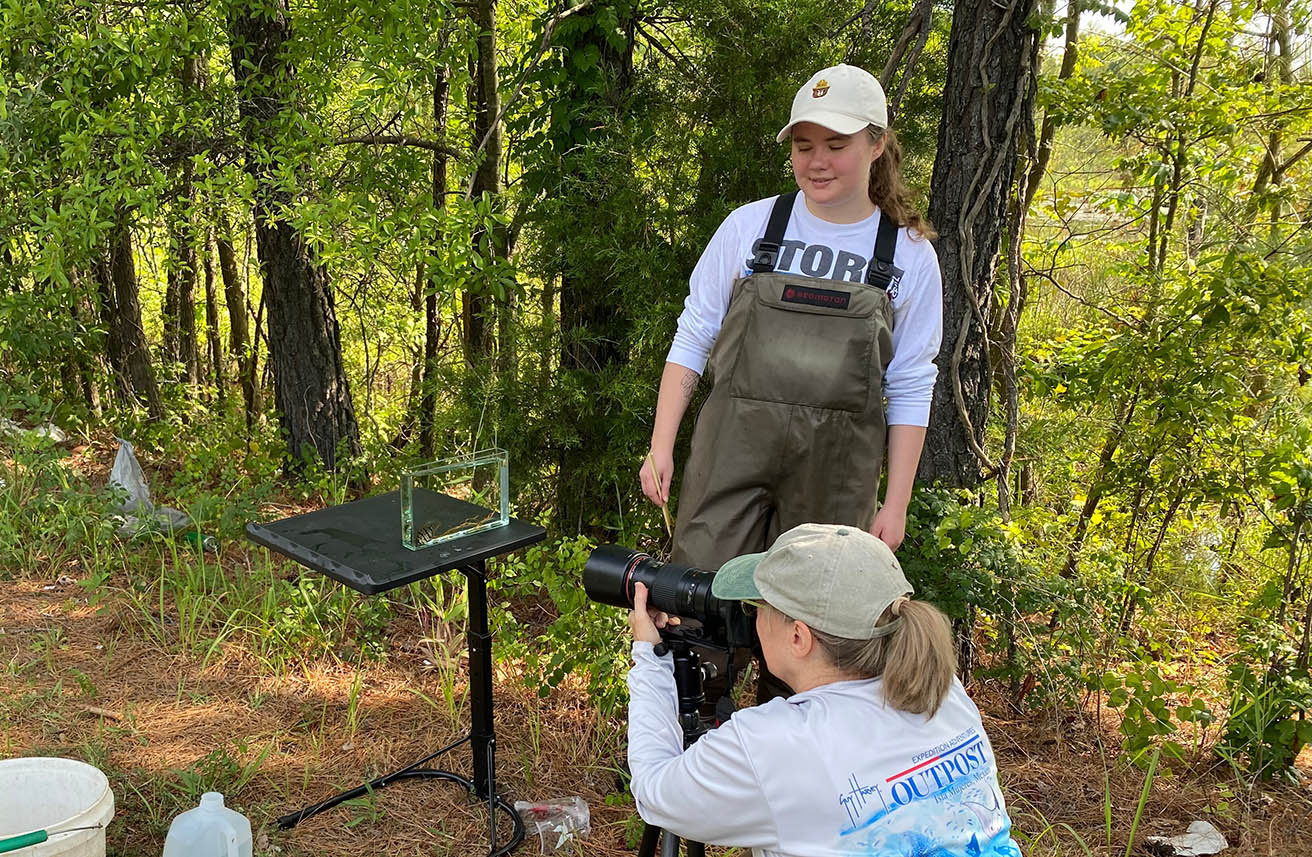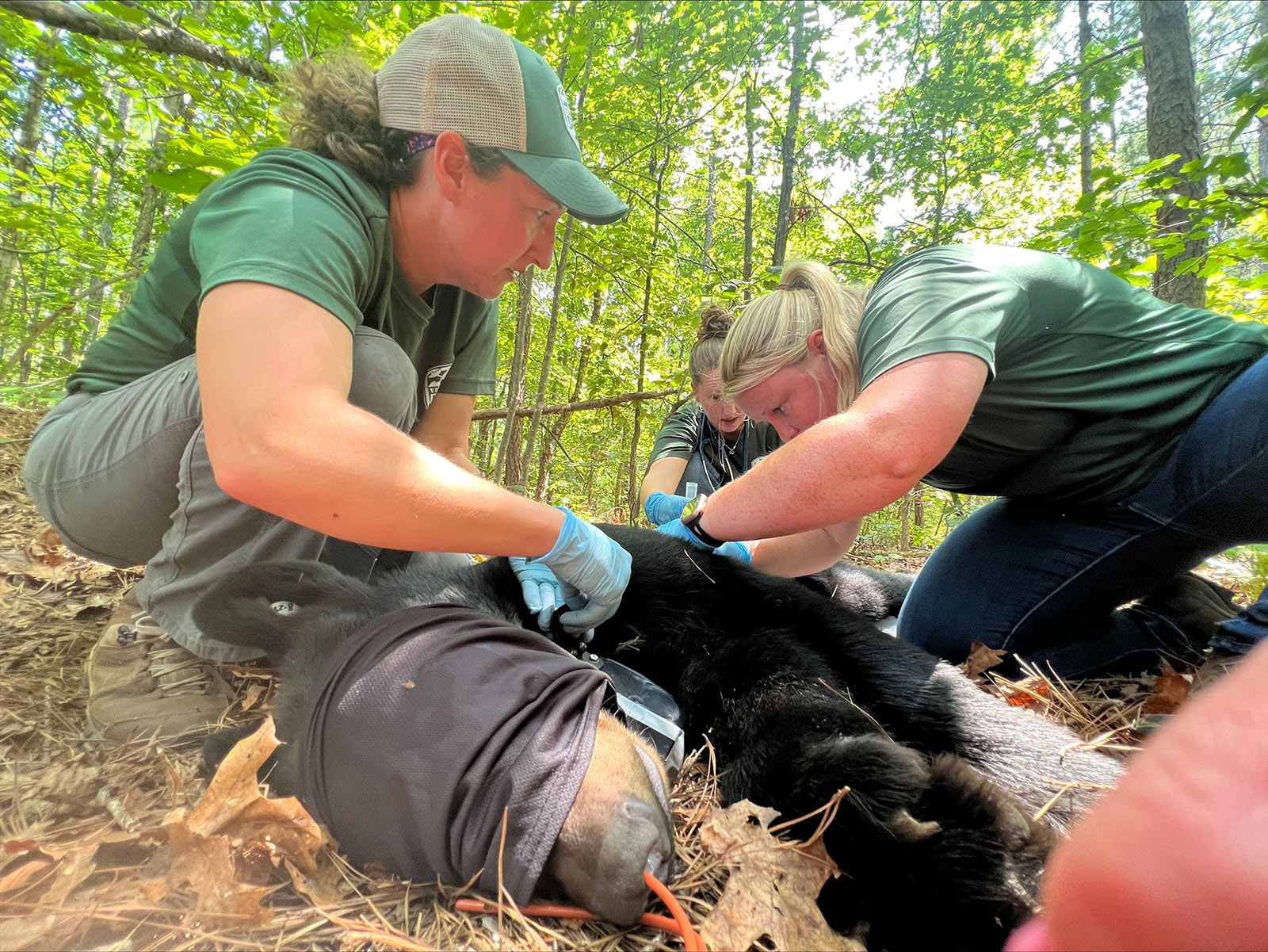By Serena Grant/DWR
Photos by Serena Grant
This summer, I got the incredible opportunity to work with the Virginia Department of Wildlife Resources’ (DWR) Outreach division as a Creative Content Intern, meaning I got the chance to write articles, attend events, and learn how publications like Virginia Wildlife magazine are made. This position was available to me in part by Steve Crandall, conservationist and the late founder of Virginia’s own Devils Backbone Brewery, through the Crandall Leadership Program, which was created by an extraordinary gift from the Anheuser-Busch Foundation in memory of Crandall. This program funded both my position and that of an intern at one of DWR’s Wildlife Management Areas, and through a three-day trip to the Devils Backbone Basecamp (DBBC) in Roseland, Virginia, we got the opportunity to learn about Crandall’s legacy as a philanthropist and conservationist as well as the company’s values of leadership.
The trip to DBBC wasn’t the only unique moment of this internship, however. While my tasks in the office were mostly concerned with the magazine, and occasionally DWR’s Virginia Wildlife calendar, my two favorite days on the job took place entirely outside of my cubicle. Shadowing Art Director Lynda Richardson, Video Production Manager Ron Messina, and Photographer Meghan Marchetti, I got to see some of DWR’s wildlife biologists in action in the field.
The first instance was in mid-June, with Richardson and Messina, attending a fish population survey (counting) that Mike Pinder, DWR non-game aquatic biologist, and his team were conducting survey for the blackbanded sunfish (Enneacanthus chaetodon) in the Black Water River system around Wakefield. My duties including helping carry equipment as well as retrieving fish species and gently adjusting them with chopsticks within a temporary tank for pictures.


The survey was taking place because of the blackbanded sunfish’s federally threatened and state endangered species status. Their ideal habitat is shallow water with heavy vegetation, but with a changing climate and record heat, the shallow pools in ponds are the first ones to dry up. By expanding the survey of the species and discovering more populations, the DWR’s potential to conserve the blackbanded sunfish is expanded as well.
The second was in late July, with Messina and Marchetti, shadowing Deer-Bear-Turkey Biologist Katie Martin and her team as they checked bear traps in Ft. Barfoot and Appomattox. The fifth and final trap we checked had a male black bear (Ursus americanus), about 3 to 4 years old, with a blaze pattern on his chest. He was sedated, de-ticked, sampled, tagged, collared with a GoPro camera, and released. While my only task that day, besides helping where needed, was shadowing, I got the opportunity to take pictures with and of the bear alongside DWR Digital Marketing Manager Caitlyn Fralin.
The purpose of bear collaring right now is, primarily, a program dedicated to pairing orphaned cubs with mothers. While the male black bear couldn’t contribute to that particular project, the GoPro camera collar he was fitted with will assist DWR biologists in other ways. The more we know about our native bear population, the better. Three months’ worth of footage—showing what a bear eats, where a bear lives, and how a bear interacts with other bears—will help that ongoing research greatly.

Similar to the survey Pinder’s team was conducting, one of the consistent goals of field work is learning more about Virginia’s wildlife. On a very basic and general level, that information contributes to finding correlations between population trends and the actual effect of various environmental factors (human development, weather trends, natural events, etc.). Without the work of DWR’s wildlife biologists, we could very well compromise the stability of our state’s natural resources.
Between both trips, I was able to pin down the identifying characteristic of a wildlife biologist: passion. The image that I had of wildlife biology before working for the department was something akin to a scientist in a movie, with work entirely contained to a laboratory filled with samples. What I was met with instead were people with a deep consideration for the outdoors in which they spend their days, who were eager to talk about their area of specialty.
I found myself feeling like I was in third grade, on a field trip resembling a Virginia Trekker’s video, eager to learn. I never felt out of depth or stupid for asking a question, and I credit Pinder and Martin for that. Not only are they excited about the animals they choose to study and survey, but they’re eager to share what they know. That took the form of casual conversation on the car rides between locations, or assisting in videos where members of the team discussed the importance of their work with DWR.
I’m somebody who loves to be outside, and like anybody who enjoys the outdoors, conservation of Virginia’s natural features is incredibly important to me. Seeing the dedication and genuine love that DWR wildlife biologists have for their work reassured me not just of the department’s competency in conservation efforts, but their commitment to them. The bottom line is that wildlife biologists care. If somebody goes to school for four or more years, gets up before the sun does every day, and spends the workday walking through tick-filled underbrush in blazing heat or freezing cold, it’s not just a job for them. It’s a life.
I ended my Creative Content Internship with not only a better understanding of how magazines and other publications are created, but also with a deep appreciation of wildlife biology. It was definitely a unique experience!
Serena Grant was the Creative Content Intern with the Virginia Department of Wildlife Resources (DWR) during the summer of 2023.


